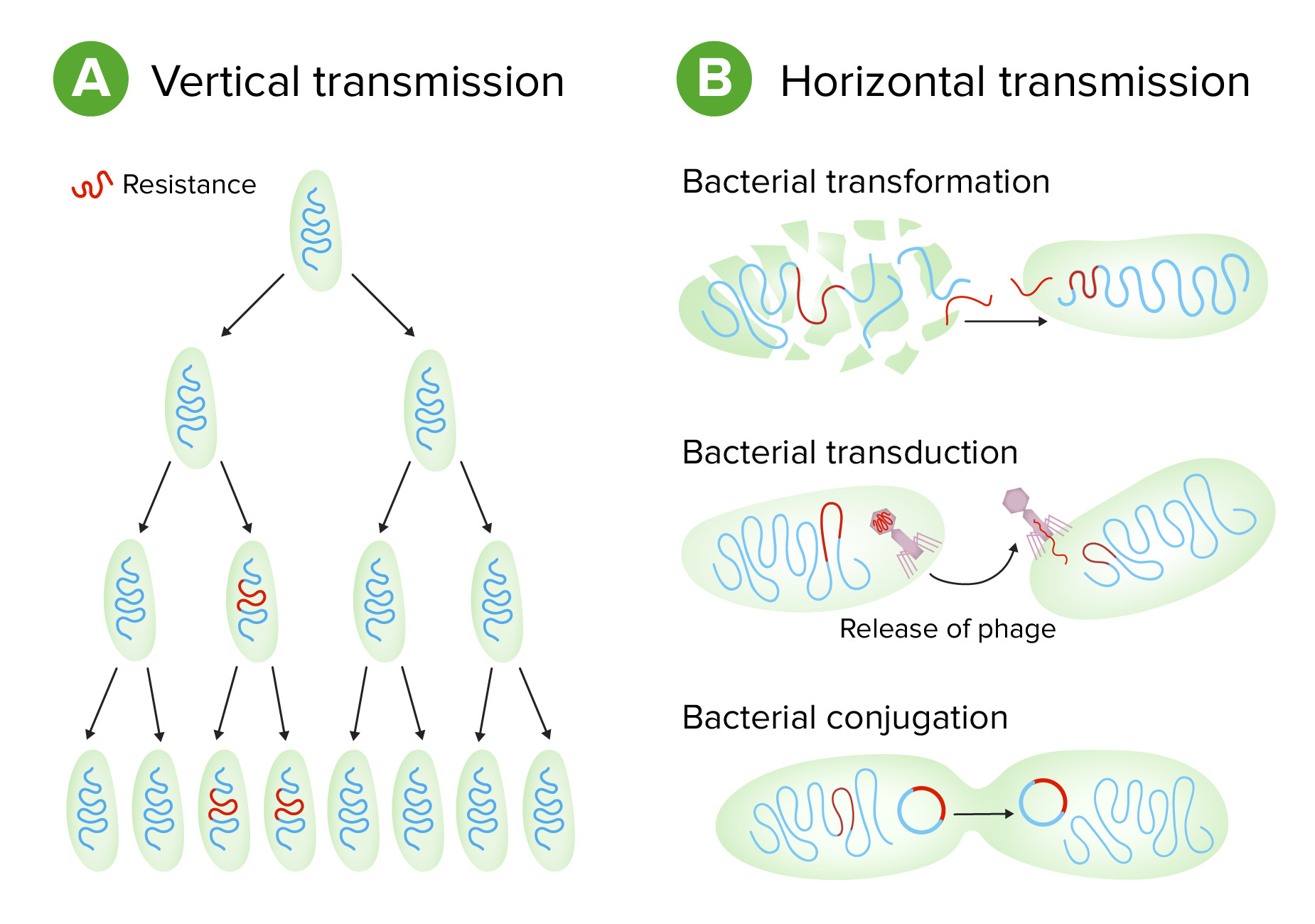Playlist
Show Playlist
Hide Playlist
Other Types of Bacterial Infections: Classification, Morphology, and Gram Stain
-
Slides Overview of Different Classes of Microorganisms.pdf
-
Reference List Pathology.pdf
-
Download Lecture Overview
00:01 So moving up the evolutionary ladder, we're gonna talk about bacteria. 00:05 And the bacteria can be either extracellular - outside of cells, or they can be facultative intracellular or a switch hitter, so they can be both inside and outside. 00:14 They are composed of DNA, RNA, and they have a cell wall. 00:18 Now, we've already talked about two other forms of bacteria. 00:20 We've already talked the chlamydia, we've talked about rickettsia, we're talking about three more here, there's three general groups of the bacterial species in this section. 00:29 One is the eubacteria, which are true bacteria. 00:32 This is a kingdom, so the eubacteria is a kingdom. 00:35 The actinomycetales, which is an order and it's going to be a different kind of bacteria. 00:41 And then we're - talk about the Spirochetes which is a phylum. 00:45 So they're not all just kingdoms or whatever, I just wanna let you know where we are in the phylogenetic tree, and again, we've already talked about chlamydia and we talked about rickettsia. 00:55 What's shown on the right hand side is a blood agar petri dish that we've smeared on some bugs, and we're gonna be characterizing those, and what's seen behind them is the staining of those organisms using a gram stain that we'll get to in a couple slides. 01:08 So bugs, the bacteria here have various tissue tropisms. 01:12 They like to go to various places depending on whether it's got the right nutrition, the right receptors, the right to access, whatever, so they're various tissue tropisms and they have various pathogenic mechanisms, so some will elaborate exotoxins. 01:28 Some will, induce a very profound inflammatory response so the pathogenesis of the various infections with bacteria's kind of all over the place. 01:38 We classically characterized the bacteria by their morphology and a gram stain. 01:45 So what do we mean by that? So how do we characterize the bacteria? We characterize it based on morphology, and how they stain with a gram stain. 01:56 Gram stain will come up in a couple more slides, but we're gonna talk about morphology here. 02:00 So first, some bacteria are round balls, those are called cocci or coccus, individually. 02:08 Then you can have the bacillus which are rod like and plural would be bacilli. 02:14 And then you can have branching forms, that look a little bit like fungus, but they're not fungus. 02:18 They're just heavy branching form. 02:20 And then, some are actually in a cork screw, into a spiral. 02:25 And so those are the basic four morphologies of the bacteria, and we will try to characterize them when we subdivide them and put them into little cubby holes, the different bacteria have different pathologies, depending whether they are gram positive, gram negative, rods or bacilli. 02:42 Let's talk about the gram stain. 02:45 I've mentioned it now a couple times, but gram stain is basically going to be a stain that will stain bacteria blue or purple, if they have a lot of certain component called peptidoglycan. 02:57 And if they don't have a lot of peptidoglycan, then they will just pick up the counter stain and they will be pink, so we have pink and blue. 03:05 And the blue means it's gram positive, the gram stain is positive; and the pink means that it's negative. 03:10 What's really going on here? Well, you can see the cell wall in a gram positive organism they're on the left hand side, and there's a very thick redundant area, peptidoglycan, and all that peptidoglycan very intensely hangs on to the gram stain, so that's why it stays positive. 03:29 Conversely, on the right hand side, those gram negative bacilli have very little peptidoglycan so they tend not to pick up much of the gram stain, but pick up a lot of the counter stain, and so they stain pink.
About the Lecture
The lecture Other Types of Bacterial Infections: Classification, Morphology, and Gram Stain by Richard Mitchell, MD, PhD is from the course Host–pathogen Interaction.
Included Quiz Questions
What is the shape of a coccus?
- Spherical
- Comma-shaped
- Corkscrew
- Rod-shaped
- Spiral
What component of the cell wall takes up the Gram stain in bacteria?
- Peptidoglycan
- Acetylglucosamine
- Acetylmuramic acid
- Lipopolysaccharides
- Mucopolysaccharide
Customer reviews
5,0 of 5 stars
| 5 Stars |
|
5 |
| 4 Stars |
|
0 |
| 3 Stars |
|
0 |
| 2 Stars |
|
0 |
| 1 Star |
|
0 |




